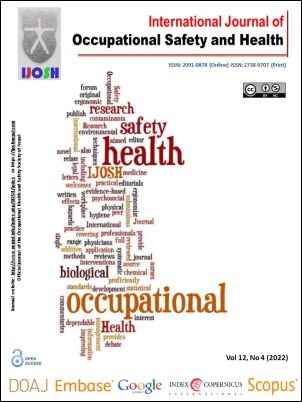Binge eating and sitting behavior as a risk cluster in obesity among software employees
DOI:
https://doi.org/10.3126/ijosh.v12i4.41140Keywords:
Binge eating disorder, Sedentary Behavior, Software employees, Lifestyle, Obesity, Sitting time, BMIAbstract
Introduction: Binge eating disorder (BED) was underdiagnosed, underestimated eating disorder known to be responsible for obesity in both children and adults. Sedentary behavior estimated by measuring the sitting time was one of the major contributing factors in the development of metabolic syndrome in adults. People working in Information Technology (IT) sector possess both of these determinants in a significant capacity and thereby might be at risk for obesity, which in turn can be responsible for various cardio-metabolic events in their life.
Methods: A cross-sectional study was conducted on 513 working adults belonging to the IT sector, using a face-to-face interview with a pre-tested questionnaire along with anthropometric measurements to measure BMI for obesity. Binge-eating disorder screener-7 for adults was adopted to assess the disorder, and the Marshall Sitting Questionnaire was used to evaluate their sitting behavior.
Results: The study found that the prevalence of BED (23%) was higher in unmarried individuals, and moderate BED is significantly associated with higher BMI among them. Conversely, sitting time (Mean=8.83 hours/day) was seen mostly in married adults, and is also associated with higher BMI. As a risk cluster, both BED and sitting time combined had higher odds of resulting in Obesity than existing separately.
Conclusion: Several lifestyle factors such as binge-watching TV, late working hours, higher salaries, etc., have contributed to developing Binge eating disorder and higher sitting time, which pose a significant risk for metabolic disorders like obesity.
Downloads
Downloads
Published
How to Cite
Issue
Section
License
Copyright (c) 2022 Vishnu Vardhan Yenuganti, Rajesh Kannan Sivakumar, Srinivas Rao Darmisetty, Sasikumar P J

This work is licensed under a Creative Commons Attribution-NonCommercial 4.0 International License.
This license enables reusers to distribute, remix, adapt, and build upon the material in any medium or format for noncommercial purposes only, and only so long as attribution is given to the creator.





